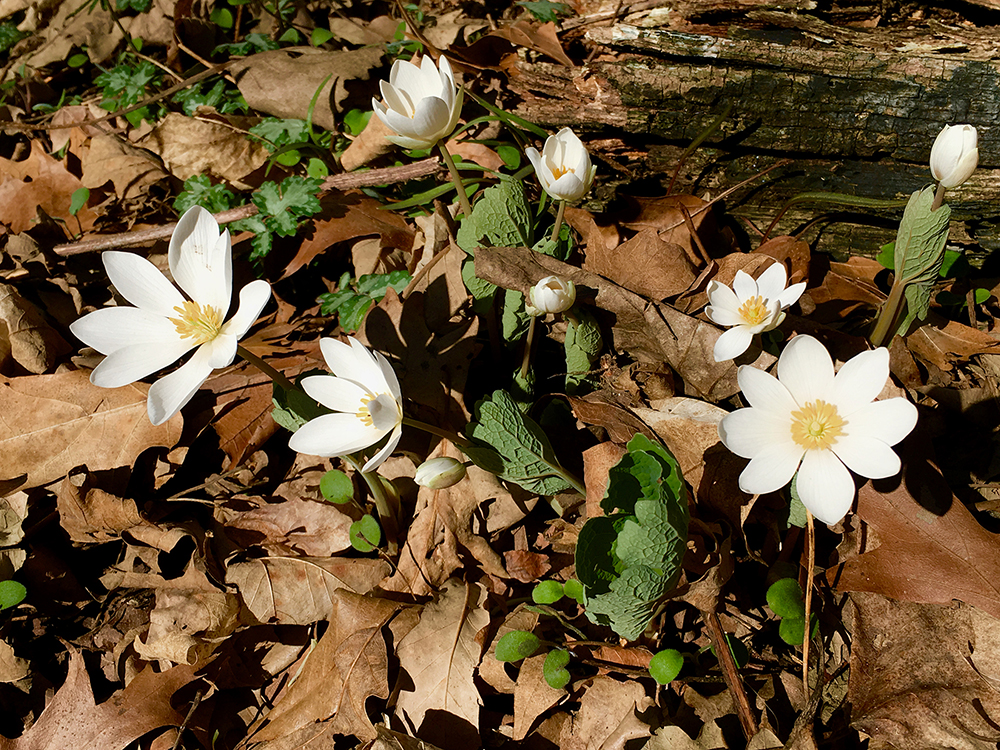
Bloodroot in bloom at Singing Woods Nature Preserve, Peoria County. The plant gets its name from red sap in its leaves, stem and roots. Bloodroot can be found in high quality woodlands throughout our region. It is one of the first ephemerals to bloom in spring with brilliant white petals. (PHOTO BY MIKE MILLER)

MIKE MILLER
Bloodroot can be found in high quality woodlands throughout our region. It is one of the first spring ephemerals to bloom and, depending on the year, can start producing flowers in early April. Bloodroot sends out a flowering stalk, separate from its leaves, which is also unusual for members of the poppy family. As the leaves are still uncurling in the crisp spring air, the thin flower stalk shoots up with a pearl white flower bud at its tip. If the temperature is warm enough, the flower bud opens to display 8 brilliantly white petals surrounding stunningly yellow stamens.
The flowers produce pollen, but no nectar. Several nectar searching insects, such as sweat bees, and bee flies will visit and search in vain, but will still pollinate the flowers. Mining bees will visit the plant to collect pollen and are probably the most effective pollinators of the plant. After the flower petals fall, a seed pod forms and the leaves fully unfurl. The seeds have an attached structure, called an elaiosome, which is rich in lipids and proteins. Ants find this irresistible and seek out bloodroot seeds and bring them back to their nests. They consume the elaiosome and cast away the seed in the nutrient-rich debris of their ant colony. These seeds are protected by the activity of the ant colony, and have fertile ground to sprout and grow into new plants.
Plants have had eons of evolution to work out their survival tactics. Hoodwinking ants to plant their seeds is just one example. Another is through chemistry. The blood-red sap is an example of how this plant has evolved over time. Bloodroot sap is filled with complex alkaloids and the plant produces the chemical called sanguinarine. In the 1990s, it was found that this chemical showed some effectiveness in preventing dental plaque buildup, and there were several commercial toothpastes and mouthwashes that included it as an ingredient. Over time, it was found that sanguinarine, while somewhat effective against plaque, was also destroying good cells and creating a type of plaque that could lead to oral cancer. Sanguinarine was soon-after pulled as an ingredient. The chemical witches-brew that pulses through bloodroot is one reason why animals are repelled from eating the leaves or roots. We should listen to the wisdom of the raccoon that avoids a plant before we are eager to put it into our mouths.
By the beginning of summer, the life cycle of the bloodroot is over. The flowering stalks have dried out and fed the ants. The leaves are now growing in the deep summer shade of the forest and are no longer needed. They soon wither in the shade. As with most spring ephemeral wildflowers, we will have to wait until the next spring before we are blessed by the presence of these beauties again.
